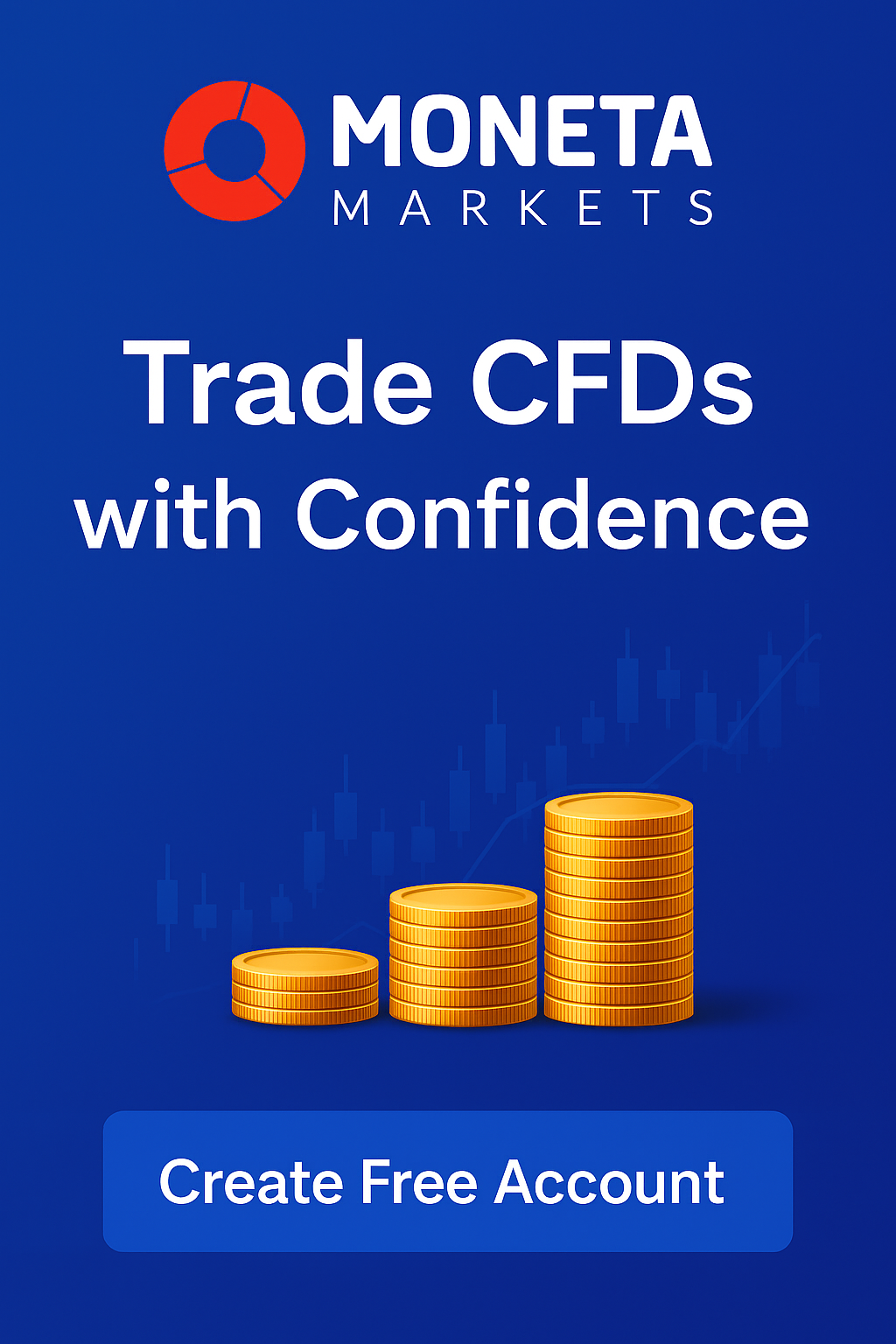Is CFD Trading a Scam? Navigating the Risks and Realities of Contracts for Difference
Just got your paycheck and wondering how to grow your wealth? You’re seeing all these flashy ads about trading, maybe even CFDs, and feeling a little lost, especially with the U.S. stock market’s ups and downs. How do you get started, and more importantly, how do you avoid getting ripped off?
This article is here to help you navigate the confusing world of Contracts for Difference (CFDs). We’ll break down what CFDs are, address the burning question of “Is CFD trading a scam?”, and give you actionable tips to protect your hard-earned money. You’ll learn how to spot potential scams, choose a reputable broker, and manage your risks effectively, even on a budget.
What Exactly Are Contracts for Difference (CFDs)?
Contracts for Difference (CFDs) are essentially agreements to exchange the difference in the value of an asset between the time the contract opens and closes. Think of it like betting on whether the price of gold will go up or down, without actually owning the gold. But are CFDs “real”?

They are a real financial instrument, but you never own the underlying asset, like shares of a company or a barrel of oil. This makes them a derivative product.
CFD Defined: A Leveraged Derivative Explained
CFDs are leveraged derivatives, meaning you can control a large position with a relatively small amount of capital. This leverage can magnify both your potential profits and losses, making them quite risky, especially for beginner investors in Taiwan. Imagine using a small amount of money to control a much larger investment; if the investment moves in your favor, your profits are amplified.
If it moves against you, your losses are amplified too. It’s like walking on a tightrope – thrilling, but potentially disastrous if you lose your balance.
How CFD Trading Operates: Betting on Price Movements
When you trade CFDs, you’re essentially making a bet on the future price movement of an asset. You can “go long” (buy) if you believe the price will increase or “go short” (sell) if you anticipate a price decrease. This is how CFD trading operates.
The profit or loss is determined by the difference between the opening and closing price of the CFD. For example, if you “go long” on a CFD for a stock at $100 and close the position at $110, you profit $10 (minus fees and commissions).
Key Characteristics: Leverage, Margin, and No Physical Ownership
Three key characteristics define CFDs: leverage, margin, and the absence of physical ownership. Leverage allows you to control a large position with a smaller amount of capital. Margin is the amount of money required to open and maintain a leveraged position.
And as previously stated, you never actually own the underlying asset. These characteristics can be both attractive and dangerous, especially for those new to trading.
The Core Question: Is CFD Trading Inherently a Scam?
The short answer is no, CFD trading is not inherently a scam. However, the high-risk nature of CFDs and the presence of unscrupulous brokers can make it seem that way. It’s vital to separate the product itself from the potentially fraudulent activities surrounding it. Some consider it gambling.

Many legitimate brokers offer CFDs, but the potential for high losses attracts scammers, making it crucial to be cautious.
CFDs: A Legitimate, Regulated Financial Product
In many countries, CFDs are a legitimate and regulated financial product. Reputable brokers are licensed and overseen by regulatory bodies, providing a degree of protection for traders. These regulations often include requirements for capital adequacy, segregation of client funds, and fair trading practices.
However, the level of regulation can vary significantly between jurisdictions. Always check if a broker is regulated by a reputable authority before entrusting them with your money.
Why the ‘Scam’ Perception Persists: Misinformation and Misconduct
The “scam” perception persists due to several factors, including misinformation, aggressive marketing tactics, and outright misconduct by some brokers. Some brokers use misleading advertising to lure in inexperienced traders, promising unrealistic profits with little or no risk. A common beginner mistake is believing these promises without doing their own research.
Additionally, some unregulated brokers engage in unethical practices such as manipulating prices or refusing to process withdrawals.
Distinguishing the Instrument from Fraudulent Operators
It’s crucial to distinguish between the CFD instrument itself and the fraudulent operators who exploit it. CFDs, when traded responsibly with a regulated broker, can be a legitimate way to participate in financial markets. However, falling prey to a scam broker can lead to significant financial losses.
By understanding the risks and knowing how to identify red flags, you can protect yourself from these dangers.
Understanding the Inherent Risks of CFD Trading
Even with a legitimate broker, CFD trading carries significant inherent risks that can lead to substantial losses. These risks stem from the leveraged nature of CFDs, market volatility, and the complexity of the product. Leverage amplifies both potential profits and losses.

Understanding these risks is essential for responsible trading and protecting your capital.
The Double-Edged Sword of High Leverage
High leverage is a double-edged sword: it can magnify your profits, but it can also magnify your losses. While it allows you to control a larger position with less capital, it also means that even small price movements against you can result in significant losses. It’s one of the greatest inherent risks when CFD trading.
For example, if you use a leverage of 10:1, a 1% price decrease can result in a 10% loss of your invested capital.
Market Volatility: Rapid Price Swings and Margin Calls
Market volatility can lead to rapid price swings, which can trigger margin calls and substantial losses in CFD trading. A margin call occurs when the value of your account falls below the required margin level, forcing you to deposit more funds to maintain your position. If you fail to meet the margin call, the broker may close your position at a loss. Margin calls can happen quickly in volatile markets.
Sudden news events, economic data releases, or unexpected political developments can all trigger significant price fluctuations.
The Statistical Reality: Why Most Retail CFD Traders Lose Money
The statistical reality is that most retail CFD traders lose money. Studies consistently show that a significant percentage of retail CFD traders lose their initial investment within a short period. This is due to a combination of factors, including lack of experience, inadequate risk management, and the inherent complexity of the product.
This doesn’t necessarily mean that “Is CFD trading a scam?”, but it highlights the challenges and risks involved.
How to Identify and Avoid CFD Trading Scams
Recognizing and avoiding CFD trading scams is crucial for protecting your capital. Scam brokers often employ tactics such as unrealistic promises, high-pressure sales, and lack of transparency to lure in unsuspecting traders. Be cautious and do your research. Some common scams are easy to identify.

Knowing these red flags can help you avoid becoming a victim of fraud.
Warning Signs: Unrealistic Promises and Guaranteed Returns
Be wary of brokers who make unrealistic promises or guarantee returns. No legitimate investment can guarantee profits, especially in a volatile market like CFDs. If a broker claims you can make easy money with little or no risk, it’s a major red flag. If it sounds too good to be true, it probably is.
Scammers often use these tactics to attract inexperienced traders.
The Perils of Unregulated Brokers and Unsolicited Offers
Avoid dealing with unregulated brokers and be cautious of unsolicited offers. Unregulated brokers operate outside the oversight of financial authorities, meaning there’s no one to protect you if something goes wrong. Be especially careful with unsolicited emails or phone calls promoting CFD trading.
These are common tactics used by scam brokers to target potential victims. Always do your own research and choose a regulated broker.
High-Pressure Sales and Lack of Transparency
Be wary of high-pressure sales tactics and brokers who lack transparency. Scam brokers often use aggressive sales techniques to pressure you into depositing funds quickly. They may also be evasive about fees, commissions, and other important details. It is important to know the details.
If a broker is unwilling to provide clear and concise information, it’s a sign that something is amiss.
Choosing a Legitimate CFD Broker: Your Due Diligence Checklist
Selecting a legitimate CFD broker is crucial for a safe and successful trading experience. Before entrusting a broker with your money, it’s essential to conduct thorough due diligence. This includes verifying their regulatory status, checking their reputation, and assessing their trading platform and customer support. This helps avoid the “Is CFD trading a scam?” question.
The Non-Negotiable Importance of Regulatory Licenses
The most important factor when choosing a CFD broker is their regulatory status. Ensure that the broker is licensed and regulated by a reputable financial authority in your region or a well-known jurisdiction. Examples include the Financial Conduct Authority (FCA) in the UK, the Australian Securities and Investments Commission (ASIC), or the Cyprus Securities and Exchange Commission (CySEC).
Regulation provides a degree of protection and ensures that the broker adheres to certain standards of conduct.
Vetting Broker Reputation and Client Reviews
Research the broker’s reputation and read client reviews before opening an account. Look for independent reviews and testimonials from other traders to get a sense of their experience with the broker. Be wary of brokers with a large number of negative reviews or complaints about unethical practices.
Check online forums and social media groups for feedback from other traders.
Assessing Trading Platforms, Spreads, and Customer Support
Assess the broker’s trading platform, spreads, and customer support. The trading platform should be user-friendly, reliable, and offer the tools and features you need to trade effectively. Spreads are the difference between the buying and selling price of an asset. This is what the CFD broker makes.
Good customer support is essential for resolving any issues or questions you may have.
Mitigating Risks: Responsible Practices for CFD Trading
Even with a legitimate broker, it’s essential to implement responsible practices to mitigate the inherent risks of CFD trading. This includes educating yourself about the markets, implementing robust risk management strategies, and practicing with demo accounts before risking real money. Education is key.
Education First: Master the Market Before You Trade
Before you start trading CFDs, take the time to educate yourself about the markets. Understand how CFDs work, the factors that influence price movements, and the risks involved. There are many resources available online, including articles, videos, and courses. Understand the risks before engaging.
A solid understanding of the market will help you make informed trading decisions.
Implement Robust Risk Management Strategies (Stop-Loss, Take-Profit)
Implement robust risk management strategies, such as stop-loss and take-profit orders. A stop-loss order automatically closes your position when the price reaches a certain level, limiting your potential losses. A take-profit order automatically closes your position when the price reaches a predetermined profit target.
These orders can help you manage your risk and protect your capital.
Start Small: Practice with Demo Accounts and Manage Capital Responsibly
Start small, practice with demo accounts, and manage your capital responsibly. Before risking real money, use a demo account to practice your trading strategies and get familiar with the trading platform. When you do start trading with real money, only risk a small percentage of your capital on each trade. Never invest more than you can afford to lose.
Responsible capital management is essential for long-term success in CFD trading.
Ready to explore financial markets responsibly? Download our ‘Beginner’s Guide to Safe Trading’ to understand key concepts and risk management, or compare rigorously vetted, regulated CFD brokers on our platform to make a confident, informed choice.


No responses yet